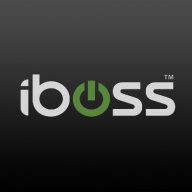


Microsoft Defender for Cloud Apps and Prisma Access by Palo Alto Networks compete in the cloud security category, with each offering distinct advantages. Microsoft Defender excels in integration within the Microsoft ecosystem, while Prisma Access offers advanced zero-trust architecture and comprehensive threat prevention capabilities.
Features: Microsoft Defender for Cloud Apps is known for its cloud and identity management capabilities, excelling within Microsoft environments. It offers comprehensive threat detection and security posture management. Prisma Access provides a robust zero-trust architecture, extensive threat prevention, and app traffic protection, integrating effectively with Palo Alto's solutions.
Room for Improvement: Microsoft Defender for Cloud Apps could enhance integration with non-Windows environments, improve its user experience, and offer better integration with third-party solutions. Prisma Access can improve its user interface usability, offer more flexible configurations, and enhance integration with non-Palo Alto products.
Ease of Deployment and Customer Service: Microsoft Defender stands out for its seamless integration within Microsoft ecosystems, simplifying deployment for existing users. Prisma Access may present complexities in deployment for those not using Palo Alto products. Customer service experiences vary for both, with regional differences influencing Microsoft support and response times affecting Prisma Access support.
Pricing and ROI: Both products are premium-priced, but value can justify costs based on needs. Microsoft Defender offers cost efficiencies, especially when bundled within Microsoft E5 licenses, providing significant savings within its ecosystem. Prisma Access, though expensive, gives high returns for organizations requiring rigorous cloud security. Both demonstrate ROI through enhanced security and operational efficiencies.



iboss offers a comprehensive security platform designed for diverse use cases such as web filtering, data loss protection, corporate proxy services, and URL filtering.
iboss integrates advanced features to address dynamic security needs, leveraging its strength in SASE, ZTNA, AI initiatives, and cloud integration, while ensuring seamless operations for remote work. It excels in historical forensics, malware protection, and flexible cloud deployments. Users benefit from comprehensive traffic scanning, robust malware detection, and PaaS capabilities that reduce hardware management. An intuitive admin console ensures efficient management with content filtering and low false positives. SSL decryption enhances security, while DLP protects data in AI conversations. Deployment is rapid and scalable, allowing effortless integration with emerging technologies.
What features does iboss offer?
What benefits and ROI should users consider?
iboss finds significant application in sectors such as education, where web filtering for K-12 is crucial, and in corporate environments requiring robust proxy services and URL filtering for network security. Its adaptability is essential in scenarios demanding flexible, decentralized security frameworks, particularly for remote work setups.
Microsoft Defender for Cloud Apps is a comprehensive security solution that provides protection for cloud-based applications and services. It offers real-time threat detection and response, as well as advanced analytics and reporting capabilities. With Defender for Cloud Apps, organizations can ensure the security of their cloud environments and safeguard against cyber threats. Whether you're running SaaS applications, IaaS workloads, or PaaS services, Microsoft Defender for Cloud Apps can help you secure your cloud environment and protect your business from cyber threats.
Reviews from Real Users
Ram-Krish, Cloud Security & Governance at a financial services firm, says that Microsoft Defender for Cloud Apps "Integrates well and helps us in protecting sensitive information, but takes time to scan and apply the policies and cannot detect everything we need".
PeerSpot user, Senior Cloud & Security Consultant at a tech services, writes that Microsoft Defender for Cloud Apps "Great for monitoring user activity and protecting data while integrating well with other applications".
Simon Burgess,Infrastructure Engineer at SBITSC, states that Microsoft Defender for Cloud Apps is "A fluid, intelligent product for great visibility, centralized management, and increased uptime".
Prisma Access by Palo Alto Networks provides consistent security for all users and applications across your remote networks. Prisma Access grants users safe access to the cloud and data center applications and the internet as well. In addition, the solution combines all of your security and networking capabilities into a single cloud-delivered platform, enabling flexible hybrid workforces.
Prisma Access can be managed two ways:
Prisma Access delivers both networking and security services, including:
Prisma Access by Palo Alto Networks Features
Prisma Access by Palo Alto Networks has many valuable key features including: App-ID, User-ID, Device-ID, SSL Decryption, Dynamic User Group (DUG) Monitoring, AI/ML-Based Detection, IoT Security, Reporting, URL Filtering, Enterprise Data Loss Prevention (DLP), Digital Experience Monitoring (DEM)*, Logging, Policy Automation, Intrusion Prevention System (IPS), and many more.
Prisma Access by Palo Alto Networks Benefits
Some of the benefits of using Prisma Access by Palo Alto Networks include:
Reviews from Real Users
Below are some reviews and helpful feedback written by Microsoft Azure Synapse Analytics
users who are currently using the solution.
PeerSpot user Partha D., Global Network Tech Lead at a computer software company, speaks about his experience using the product, saying, "It protects all app traffic so that users can gain access to all apps. Unlike other solutions that only work from ports 80 and 443, which are predominantly for web traffic, Prisma Access covers all protocols and works on all traffic patterns... The most sophisticated attacks can arise from sources that are not behind 80/443."
Tejas J., a Sr. Cloud Security Architect at a computer software company, mentions that "it is geographically dispersed, and it sits on top of Google and AWS platforms. Therefore, you don't face the standard issues, such as latency or bandwidth issues, that you usually face in the case of on-prem data centers.”
Another PeerSpot reviewer, Max I., Associate Director at Cognizant, comments that "Security is absolutely spot-on, really top-notch. It's the result of all the components that come together, such as the HIP [Host Information Profile] and components like Forcepoint, providing end-user content inspection, and antivirus. It incorporates DLP features and that's fantastic because Prisma Access makes sure that all of the essential prerequisites are in place before a user can log in or can be tunneled into."
We monitor all Cloud Access Security Brokers (CASB) reviews to prevent fraudulent reviews and keep review quality high. We do not post reviews by company employees or direct competitors. We validate each review for authenticity via cross-reference with LinkedIn, and personal follow-up with the reviewer when necessary.